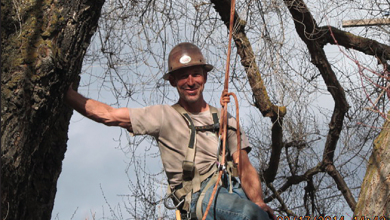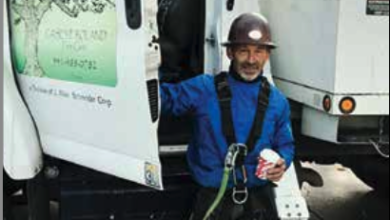Tree Care Myths
Because trees can endure an amazing amount of abuse, practices that have been long thought to be of benefit to trees run the gamut from ‘topping”, “thinning” and the like, to filling cavities with (whatever) and raising the canopy to reduce the chance of blowdown. The installation of tensioned steel cables used to be the norm, and I have, in the past done this as well.
We should always look at what I refer to as “wild” trees… Wild trees found in a native forest are the best working examples of the specific approach a tree care professional should consider when dealing with trees in an urban environment. They know better! When a tree has limbs that gently touch the ground, the structural failure rate for that particular tree plummets! This is not easily explained as the gentle touch isn’t really load bearing, maybe it is because the tree is “grounded”? Maybe because the wind load is evenly diffused throughout the canopy? Maybe because the tree is proud of its dignified “look” and decides to behave? No one has the answer, no one that is, except the tree…
A sharp tool is hard to put down, and I think that has led to pruning to excess, when the ideal is to prune to success. Good arboricultural practices need a gentle touch! Arborists are not paid by how much they remove from the tree, or shouldn’t be,anyway. Knowing what to edit, and the positive results of said editing is money well spent. If you remove too much, or at the wrong place, this could trigger the tree into a race to make up for the loss of food. Over pruning any tree will cause the future life of the tree as well as the arborist who works on it, to be a real problem.
There are trees that can, under special conditions, get to the stage where they outgrow there natural form to the point of being “leggy” or more properly, “beamy”. Reducing end weight may have to be accomplished over a few pruning cycles, instead of all at once, lest you throw the tree into survival mode.
Before the age of chainsaws, flush cuts were rare. It was the best thing for trees to have as small an area injured as possible, and when all you have to do is “hit the gas” on a pruning saw, the injuries get bigger and bigger! Now we know that somewhere between a stub and a flushcut is the proper place to make a pruning cut, but it has been a long road, indeed.
Often, instead of pruning a tree, I will recommend planting another tree or three around it to give it some company as trees really enjoy the company of others!
Older trees really benefit from having youngsters around, it just brightens their day. Trees in a forest setting have friends to lean on, and friends to talk to. The only thing an arborist can really “add” to a tree besides some form of structural enhancement like a bolt or prop, is an enhancement of the cultural conditions such as mulch, nutrients, or supplemental irrigation.
Painting cuts, topping, over pruning/thinning, filling cavities with concrete or foam, installing static cables, and installing a “protection” fence at the dripline are all practices which are dying a sometimes too slow death – good riddance! Fall planting time is near, time to visit the nursery for the next addition to your urban forest…



